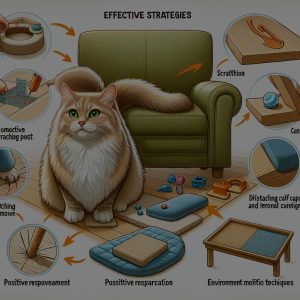
Mastering the Art of Feline Training: A Guide to Cultivating Well-Behaved Cats ===
Cats are known for their independent nature, but with the right training techniques, they can become well-behaved companions. Understanding feline behavior is key to effective training, as it allows us to gain insights into their natural instincts and tendencies. By using step-by-step training techniques, you can create a roadmap to help your cat develop good manners and behaviors. In this article, we will explore the importance of understanding feline behavior and provide practical tips to help you train your cat successfully.
Understanding Feline Behavior: Key Insights for Effective Training
In order to effectively train your cat, it is crucial to understand their behavior. Unlike dogs, cats are more independent and generally less motivated by pleasing their owners. However, by understanding their natural instincts and tendencies, you can work with their behavior rather than against it. For instance, cats are known for their territorial nature, so when training them, it is essential to create a safe and comfortable environment for them to learn and explore.
Another important aspect of feline behavior is their preference for positive reinforcement. Unlike punishment-based methods, positive reinforcement involves rewarding desired behaviors with treats, praise, or playtime. Cats respond better to positive reinforcement, as it strengthens the bond between you and your furry friend. Understanding these key insights into feline behavior will lay the foundation for effective training.
Step-by-Step Training Techniques: A Roadmap to Well-Mannered Cats
When it comes to training your cat, utilizing step-by-step techniques can help you achieve better results. Begin by establishing a consistent routine that includes regular feeding, litter box maintenance, and playtime, as it helps in maintaining a balanced and disciplined lifestyle for your feline friend. Cats thrive on routine, and by adhering to a structured schedule, you can make the training process more effective.
One effective training technique is clicker training. By using a clicker to mark desired behaviors, you can communicate effectively with your cat and reinforce positive actions. For example, if you are trying to teach your cat to sit, click and reward them with a treat when they do so. Consistency and repetition are vital for successful training, so make sure to practice these techniques regularly.
Another important aspect of training is managing unwanted behaviors. Cats may exhibit behaviors such as scratching furniture or jumping on counters. Instead of punishing them, provide appropriate alternatives like scratching posts and designated climbing areas. Use positive reinforcement to reward them when they choose the desired options. By redirecting their behavior and rewarding positive actions, you can effectively train your cat to be well-behaved.
Training your cat requires patience, consistency, and an understanding of feline behavior. By understanding their instincts and using positive reinforcement techniques, you can guide your cat towards well-mannered behavior. Remember to create a safe and comfortable environment for training, establish a routine, and utilize step-by-step techniques like clicker training. With time and effort, you can master the art of feline training and cultivate a strong bond with your well-behaved feline companion.
Sure, here’s an example of a “You might be interested in” paragraph with embedded links to related Wikipedia articles: — You might be interested in further understanding the behavior of felines to improve your training techniques. Speaking of positive reinforcement, you may want to read about how operant conditioning can be applied to animals, including cats. Additionally, learning about the significance of clicker training could provide you with practical guidance on this effective method. Finally, for a deeper dive into the science behind animal behavior modification, the concept of behavior modification might be particularly enlightening. — This paragraph naturally incorporates the keywords and provides valuable external resources for readers interested in feline training.










